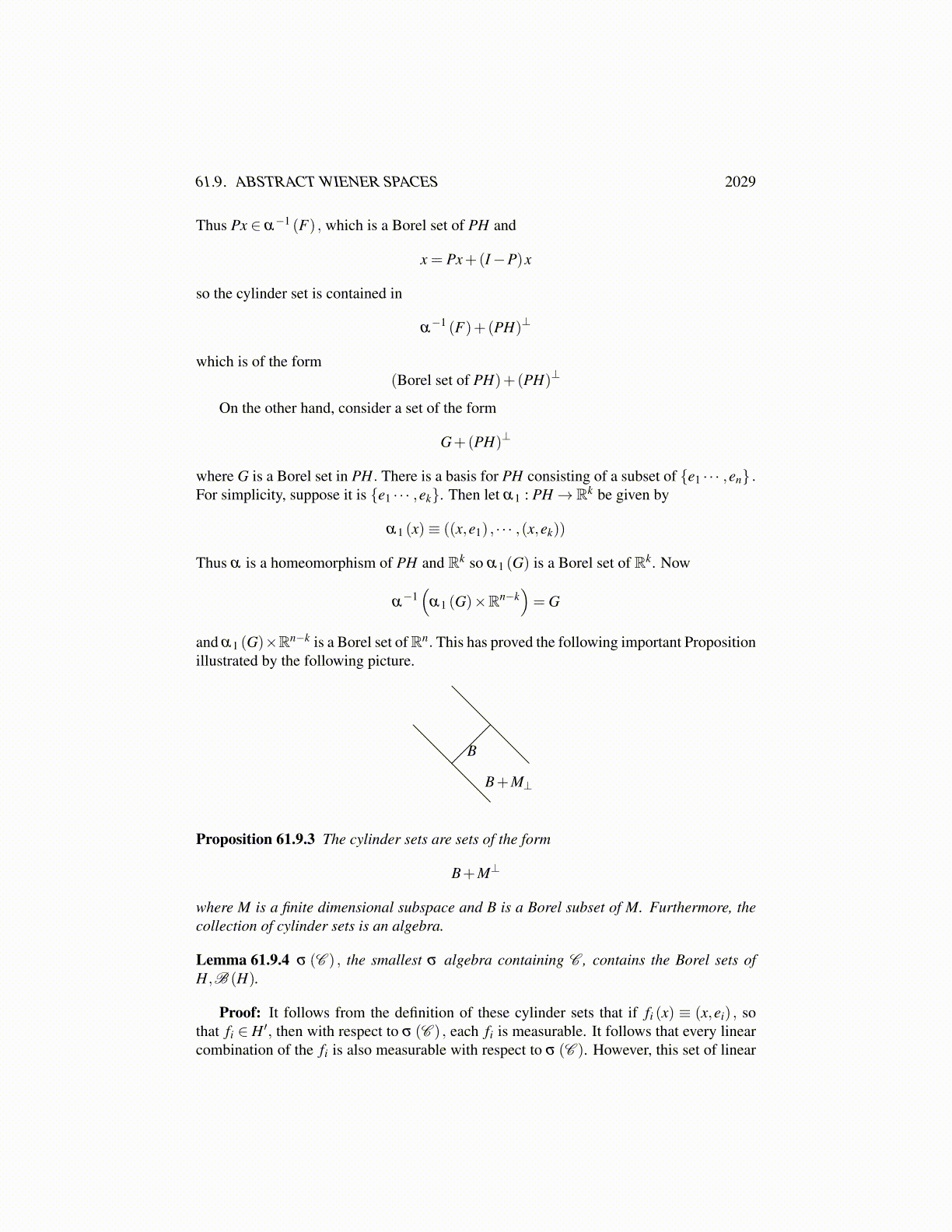
61.9. ABSTRACT WIENER SPACES 2029
and so, passing to the limit in 61.8.40 yields
exp(it (m,h))exp(−1
2t2 (Qh,h)
)(61.8.41)
which implies that ω → (X (ω) ,h) is normally distributed with mean (m,h) and variance(Qh,h).
Now let µ = L (X) . That is, for all B ∈B (U) ,
µ (B)≡ P([X ∈ B])
In particular, B could be the cylindrical set
B≡ [x : (x,h) ∈ A]
for A a Borel set in R. Then by definition, if h ∈U, and A is a Borel set in R,
µ (B) = µ ([x : (x,h) ∈ A])≡ P({ω : (X (ω) ,h) ∈ A})
=∫
A
1√2π (Qh,h)
e−(t−(m,h))2
2(Qh,h) dt
and so x→ (x,h) is normally distributed. Therefore by definition, µ is a Gaussian measure.Letting t = 1 in 61.8.41 it follows∫
Uei(x,h)dµ (x) =
∫Ω
ei(X(ω),h)dP = exp(i(m,h))exp(−1
2(Qh,h)
)which is the characteristic function of a Gaussian measure on U having covariance Q andmean m. This proves the proposition.
61.9 Abstract Wiener SpacesThis material follows [21], [71] and [58]. More can be found on this subject in thesereferences. Here H will be a separable real Hilbert space.
Definition 61.9.1 Cylinder sets in H are of the form
{x ∈ H : ((x,e1) , · · · ,(x,en)) ∈ F}
where F ∈ B (Rn) , the Borel sets of Rn and {ek} are given vectors in H. Denote thiscollection of cylinder sets as C .
Proposition 61.9.2 The cylinder sets form an algebra of sets.
Proof: First note the complement of a cylinder set is a cylinder set.
{x ∈ H : ((x,e1) , · · · ,(x,en)) ∈ F}C
={
x ∈ H : ((x,e1) , · · · ,(x,en)) ∈ FC} .